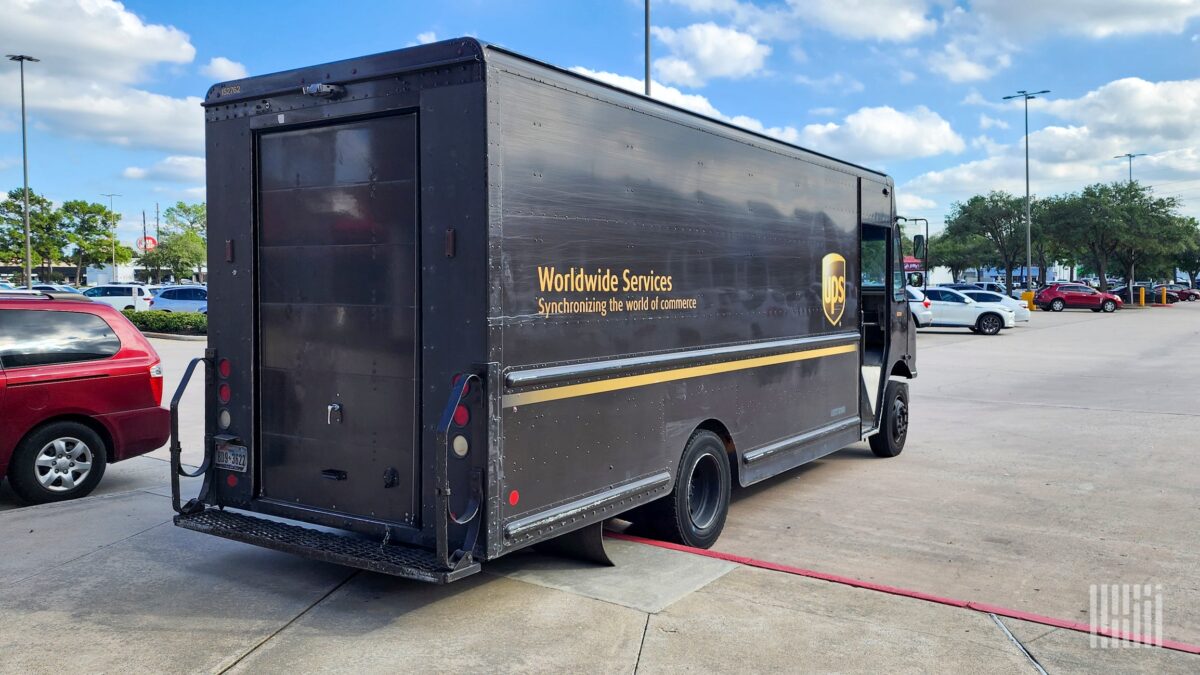UPS Inc. said it has rolled out a product that will provide select customers with a “fast” next-day delivery option within a metropolitan service area.
The service, called Hyperlocal, was launched earlier this month, CEO Carol B. Tomé said last week on an analyst call. Tomé called it a fast next-day delivery option that would help UPS capture “profitable B2B and B2C volume.” She provided no further detail on the call, and the company declined to offer additional information afterward.
The new service resembles a reconstituted version of a UPS (NYSE: UPS) project launched about five years ago, according to a person familiar with the matter. Back then, the idea was to pick up local volumes from a retailer’s fulfillment center in the wee hours of the morning, transport the goods in time for UPS’ morning presort process and then deliver them to consignees the same day.
UPS rival FedEx Corp. (NYSE: FDX) had a similar service, the person said. The two biggest users at the time were multi-lines retailer Target Corp. and electronics retailer Best Buy Co. The service had limited appeal because there had to be sufficient volumes moving within a specific geography to make it consistently work, the person said. UPS effectively let the program fade by 2019, in part because FedEx had captured Best Buy’s business, according to the person.
Earlier this year, Amazon.com Inc. (NASDAQ:AMZN) transformed its U.S. fulfillment and distribution network from a national hub-and-spoke model to eight regions. The change has shortened the distance between fulfillment and delivery and has made same-day deliveries a consistent part of Amazon’s value proposition, executives have said.
Scott Lord, who spent more than 18 years at UPS and today runs a consulting firm, said UPS’ objective at the time was to focus on markets where a shipper had a distribution center or a similar shipping location within 100 miles of the delivery address. “Late-night pickups would hit a sort (facility) early enough to go out for delivery the next day,” he said in an email.
The service was marketed for consumers and businesses to order as late as 9 p.m. for next-day delivery, Lord said.
Today, UPS has capabilities such as Roadie, a crowdsourced delivery platform, and Ware2Go, where small to midsize businesses can find available warehouse space aligned with their local delivery density. UPS can use these assets to transform the local experience into same-day delivery, perhaps within hours, Lord said.
As more shippers emphasize regionalization of their distribution networks, a same-day delivery offering could gain traction among a broader universe of receivers, whether they be businesses or consumers, he said.











ka
yeah i remember getting the best buy feeder around midnight. they never pushed it, and it was never more than a small handful of packages even though it stopped at 2 or 3 stores in a daisy chain. Big Box corps who want to compete with the Smile guys really should lean into this capability UPS is offering, order as late as 11pm and get it next day.
Just need the backend to only fulfill whats within the service zone of the nearby hub